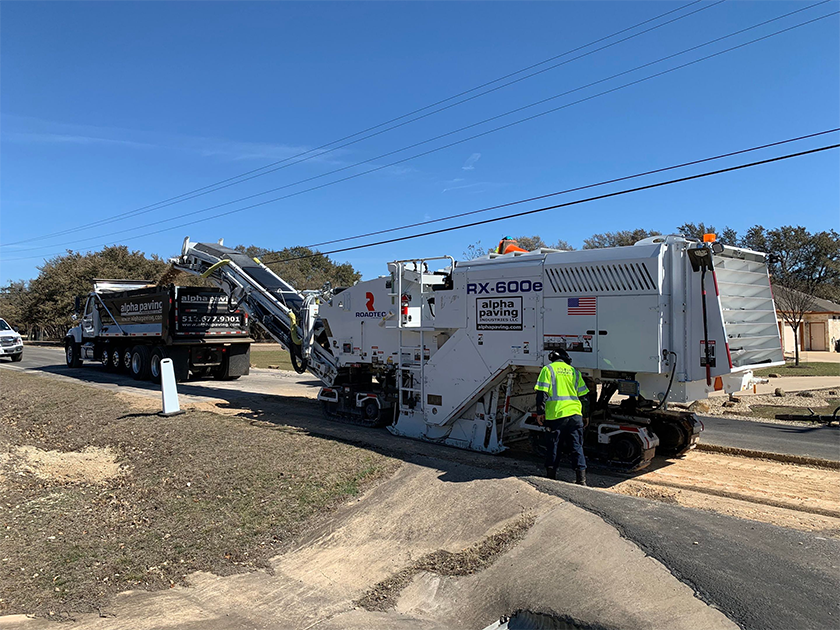The smart Trick of A1 Professional Asphalt & Sealing Llc That Nobody is Discussing
The smart Trick of A1 Professional Asphalt & Sealing Llc That Nobody is Discussing
Blog Article
Facts About A1 Professional Asphalt & Sealing Llc Revealed
Table of ContentsA1 Professional Asphalt & Sealing Llc Can Be Fun For AnyoneAll About A1 Professional Asphalt & Sealing LlcThe Buzz on A1 Professional Asphalt & Sealing LlcSome Known Details About A1 Professional Asphalt & Sealing Llc Things about A1 Professional Asphalt & Sealing Llc

The oil in an automobile engine is not simply oil. It includes a variety of ingredients to improve the vehicle's efficiency. These consist of polymers, viscosity modifiers, warm stabilizers, additional lubes, and wear ingredients. The REOB includes all the additives that were in the waste oil as well as the wear metals from the engine (mainly iron and copper).
Nevertheless, by making several blends utilizing various REOB samples and different asphalt binders, the variants greatly can be balanced out. Numerous States provided examples of recognized REOB structure to TFHRC scientists, who analyzed the examples to contrast the percentage of added (understood) REOB to the located (examined) quantity. The evaluations showed an equivalent percent of added and discovered REOB.
Getting The A1 Professional Asphalt & Sealing Llc To Work
None of those States recognized that the asphalt they were acquiring included REOB. One State insisted its examples had no REOB - https://www.indiegogo.com/individuals/37631252.
Of the 1,532 examples evaluated, 12 percent consisted of REOB, and some contained significantly high levels of it at 1020 percent. The highest possible degree was 34 percent in a sample from Texas, which TxDOT had utilized in a patching compound. This screening likewise exposed the existence of phosphoric acid in 11 percent of the samples, and 2 percent had ground tire rubber.
Two years back at TRB's annual meeting, the Federal researchers held an REOB workshop and provided the findings of their research laboratory evaluations to a standing room-only group. Some companies do not specifically prohibit REOB, they do impose physical tests that avert its useeffectively a restriction. Others do not ban it by requirements, but have arrangements with asphalt distributors to stay clear of using REOB
A1 Professional Asphalt & Sealing Llc Fundamentals Explained
A handful do allow REOB, some within particular limits. For instance, Ohio and Texas limitation degrees to less than 5 percent of the asphalt. To establish a trustworthy test method that all States can utilize, the TFHRC researchers established a round-robin examination plan. The participants are 11 State highway agencies (Illinois, Massachusetts, Minnesota, Mississippi, Montana, North Carolina, Oklahoma, South Carolina, Texas, Vermont, and Wyoming), 2 independent screening laboratories, the Ministry of Transportation in Ontario, Queen's College in Ontario, and an Ontario paving professional.
In total, the scientists prepared and delivered 720 blends. The participants are testing the samples separately utilizing the standards given by the TFHRC scientists. The round-robin testing is almost completed, and TFHRC remains in the procedure of collecting the outcomes. The outcome will certainly be a suggested AASHTO examination approach that any State can take on and utilize (asphalt paving repairs).
The pavement with REOB, which is located 0.6 mile (1 kilometer) from the sidewalk without REOB, has identical subgrade, traffic density, and climate. The section of Highway655 with 5 to 10 percent REOB revealed significant cracking. In this instance, the existence of REOB was the recognized root cause of fracturing at a low temperatures.
"In our experience in Canada, also little quantities of 23 percent can be a trouble." In a similar way, a section of test pavement in Minnesota (MN1-4) located to consist of REOB also split prematurely. The sidewalk performed well for the initial 3 review to 4 years, however then started to split. This sidewalk is additionally subject to reduced temperature levels.
A1 Professional Asphalt & Sealing Llc Can Be Fun For Anyone
The tests were not comprehensive, yet they showed that at degrees of 6 percent or more, the tensile stamina of the asphalt dropped considerably. At a degree of 3.5 percent REOB, the variant in the physical examination approaches was more than the effect of REOB. In fact, it was challenging for researchers to assess whether REOB existed.

One binder criterion taken into consideration is the difference between the low temperature essential spec temperature level for tightness (S) in the flexing light beam rheometer and the bending beam of light rheometer creep incline (m-value) noted as Tcritical. Two independent research study teams, one from AASHTO and the other from the Asphalt Institute, ended that more study is required on the usage of REOB in asphalt.
Formerly, all asphalt testing measured engineering residential or commercial properties such as stiffness. These tests do disappoint what materials had been included to the asphalt. One example obtained during the TFHRC study had a really weird evaluation. The example had the adhering to examination outcomes: Superpave PG 64-28 with a high temperature grade of 67.3 Tcritical on the bending beam rheometer was 6.7 levels Celsius.

A1 Professional Asphalt & Sealing Llc Fundamentals Explained
These results demonstrate there are weaknesses in the standard design testing procedures that might be made use of. The producer might have an economic benefit and the item passes all the standard tests, however the item might not be advantageous to making sure lasting efficiency. To address this problem and the expansion of new asphalt ingredients and extenders, TFHRC is starting a research program to utilize portable spectroscopic tools, x-ray fluorescence spectroscopy, and Fourier change infrared spectroscopy to enable analyses to be performed in the area rather than needing to take examples back to the laboratory.
Report this page